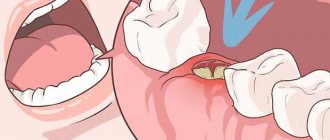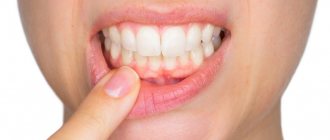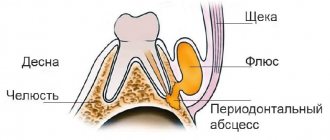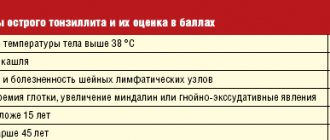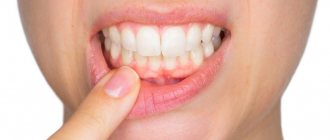- Why a temporary filling is placed: types of material
- Why does a tooth with a temporary filling hurt: the main reasons
- Standard activities after installation of the material
- Temporary filling hurts when pressed: how to cope with the disease
Many patients complain to dentists that their tooth hurts under a temporary filling. For the first 2-3 days, a slight aching pain is considered normal and does not cause cause for concern or panic. It is associated with the active influence of drugs on the nerve endings of the molar or premolar.
If the temporary filling hurts very strongly and for a long time when pressed, it is recommended to make an appointment with a specialist earlier than the specified date. Dentists at the reliable A-Medic clinic will conduct a thorough examination and prescribe a diagnostic examination to find out what exactly is causing the pain. All people are scared that they have had a temporary filling installed and their tooth hurts, but most often there is no reason to worry.
Why a temporary filling is placed: types of material
Non-permanent filling is a mandatory measure in the treatment of complicated carious lesions and root canal inflammation. It is required for medicinal treatment of an inflamed molar or premolar. It is entrusted with the protective function of the treated cavity from food ingress. Also, it prevents the medical pad from falling out.
The composition of such material differs significantly from a permanent filling. It can be made from water-insoluble or plastic components. The choice of the most suitable material directly depends on the condition of the molar or premolar and the purpose of the installation. Among the most common materials are:
- sympath. It can be of different shades - white (for filling non-pulp teeth) or light pink. The mass does not provoke irritation and other allergic reactions;
- dentin paste. It reliably protects the tooth from staining with amalgams and is characterized by water-repellent properties. The paste hardens in 100-120 minutes;
- zinc polyacrylate cement. It is characterized by good biocompatibility with tissues and high strength. The material is used for fixing prostheses (crowns) or filling (both permanent and baby teeth);
- Vinoxol. It is characterized by reliability and durability, capable of maintaining integrity for up to 4-5 months. The drug has antiseptic properties, which allows you to disinfect the tooth cavity. It hardens in 3-4 hours.
There are situations when the carious lesion did not have time to reach the nerve. In such cases, the molar or premolar is not depulped, but temporary material is installed. This is necessary for diagnosis to see whether the tooth will become sensitive or not. With the help of these measures, it is possible to completely preserve a molar or premolar (without removing the nerve) if the patient does not experience pain. If a pronounced reaction occurs (if the temporary filling hurts), the dentist will remove the nerve after placing a filling with arsenic.
Often, non-permanent filling is resorted to during prosthetics. This allows you to protect the molar or premolar from pathogenic microorganisms. The wearing period is individual and directly depends on the type of material and the reason why filling was required. It is installed by the attending dentist. On average, after 7-10, specialists replace it with a permanent filling. Sometimes, after applying a temporary filling, a tooth hurts; let’s figure out what could cause this phenomenon.
Why does a tooth with a temporary filling hurt: the main reasons
Often, patients with a temporary filling have a toothache when pressed. In some cases, such a reaction is considered normal. The attending physician will be able to answer for sure why a tooth hurts after a temporary filling after examining the oral cavity and conducting a diagnostic examination. Let's take a closer look at the main reasons for the appearance of pronounced discomfort sensations:
- Impact of the drug. If a tooth hurts with a temporary filling and medication, then most often the source of discomfort is its effect on the tissue. You should contact a specialist if the pain is pronounced and reduces the quality of life.
- Unfinished therapy. Often, after the pain has subsided, a person decides to stop therapy and does not come to an appointment to replace it with a permanent material. Temporary material is not intended to be worn for several years, so sooner or later it will fall out. It is recommended to replace at the appointed time.
- Allergic reaction to cementitious agent. If a tooth with a temporary filling aches and hurts a lot, the reason may lie in an allergic reaction. In such a situation, it would be more advisable to replace it with another cementing agent (depending on the period of wear).
- Lack of material. There is a high probability that it fell out while drinking or eating food, so external factors (irritants) come into direct contact with the soft tissues. An infection could have entered the tooth cavity, causing an inflammatory reaction.
- Prolonged wearing of the cementing agent (longer than the prescribed period). The material is quite fragile; when worn for a long time, it begins to lose its tightness, allowing pathogenic microorganisms (bacteria) to enter the cavity of the molar or premolar.
The biggest cause for concern is discomfort after installation of permanent material. This is an alarming signal that may indicate incorrect installation, untreated pathology, or emerging complications. In this situation, you need to make an appointment with a specialist to determine the main source of pain.
Why gums become inflamed after treatment: possible reasons
Minor inflammation after dental canal filling or other types of treatment is considered normal and does not require special therapy except for maintaining a hygienic regime. But if the inflammation does not go away on the second or third day, and is accompanied by severe pain, hyperemia of the mucous membranes, and swelling, the cause should be found out. It is not recommended to use anti-inflammatory and antibacterial drugs without consulting a dentist - self-medication can aggravate the problem and lead to progression of the pathology.
Allergic reaction
One of the most common causes of inflammation of the gum tissue is an allergy to medications used for local anesthesia. In this case, inflammation is manifested by severe local swelling at the injection site, redness and soreness of the tissue. An allergic reaction can also occur to the following groups of drugs used during dental procedures:
- hemostatics (hemostatic drugs, used mainly after extraction of a tooth from a bone alveolus);
- antibacterial drugs (placed in the tooth cavity when there are signs of an infectious process);
- antiseptics, which are used to disinfect dental canals;
- disinfectant solutions for sterilization of medical instruments;
- arsenic paste for killing the dental nerve (rarely used in modern dental practice).
Inflammation of the gums can occur as a result of an allergic reaction
In addition to swelling and redness, rashes in the form of small pale pink dots may appear on the mucous membranes of the gums, accompanied by itching and burning.
Allergy treatment involves the use of drugs from the group of histamine receptor blockers. Popular antihistamines, as well as their regimen, are listed in the table below.
| A drug | Image | Reception scheme | Cost (average values are indicated for packaging with a minimum volume) |
| "Claritin" | 10 mg 1 time per day, regardless of meals | 155 rubles | |
| "Loratadine" | 10 mg 1 time per day | 12 rubles | |
| "Erius" | 5 mg once a day at the same time | 224 rubles | |
| "Fenistil" | 20 drops in the morning during breakfast and 40 drops in the evening before bed | 356 rubles | |
| "Zodak" | 10 mg 1 time per day | 122 rubles | |
| "Tavegil" | 1 mg 2 times a day before meals | 145 rubles |
Important! All dosages in the table are indicated for adult patients and adolescents over 12 years of age. The regimen for use in childhood is selected individually.
Poor quality treatment
Errors during dental treatment can also lead to inflammation on the first or second day after the manipulations. The most common cause of such symptoms is infection of soft tissues as a result of pathogenic bacteria, fungi or viruses entering the damaged gum. To avoid this, you must follow all the dentist’s recommendations, especially in the first 72 hours after treatment. To prevent complications, which include inflammatory processes in the gums, the patient is recommended to:
- do not eat or drink for 2-8 hours after treatment (the final time depends on the type of therapy performed, the severity of the underlying diagnosis and the medications used);
- rinse your mouth with antiseptics or anti-inflammatory decoctions of chamomile, calendula or St. John's wort (on the first day it is better to do oral baths);
- take antimicrobial and antibacterial drugs if prescribed by a doctor;
- maintain a gentle hygiene regime so as not to injure your gums.
Poor treatment can cause gum inflammation
Important! In especially severe cases, inflammation can be triggered by a foreign body. This situation is possible when the special needles that are used to clean the canals break off. Symptoms of this pathology will be manifested by severe pain, swelling and swelling of the gums, severe hyperemia of the mucous membranes around the filled tooth. If such signs occur, you should immediately consult a doctor (if pain and inflammation appear at night, you can contact the emergency dentist).
Tooth injury during treatment
Damage to soft or hard tissue that may occur during the use of medical instruments can lead to the formation of cysts. Cysts are growths in the form of cavity sacs that have an oblong and elongated shape and are filled with exudative or purulent fluid. If the cyst is not treated in time, it can develop into a granuloma - a benign tumor of the dental root (located mainly at the apex of the root system).
Advanced dental cyst
Cysts can go undetected for a long time. They are characterized by a slow course with mildly expressed symptoms. During the formation of a cyst, the gums may look inflamed and hyperemic, but after a few days these signs disappear, and the person mistakenly thinks that everything is fine.
- How long does it take for drugs to leave the body?
Important! If there are frequent inflammatory processes in the gums around the tooth that has been treated, it is necessary to consult a doctor and undergo an X-ray examination to exclude formations of various etiologies.
Video: Why gums become inflamed
Standard activities after installation of the material
Do not drink or eat until the material has completely hardened, as it may crack or fall out completely. Also, food can get into the cavity of a molar or premolar. After a non-permanent filling, it is not recommended to eat soft food for the first 2-3 hours, and hard food for 10-12 hours. This will avoid a number of negative consequences. When chewing solid food in the future, you should use less of the side on which the filling was performed.
While wearing the material, hygiene rules must not be neglected. You should brush your teeth twice a day, and after eating, rinse your mouth with antiseptic solutions and floss. If the temporary material is installed for several months, it is recommended to use a brush with softer bristles during this period. To avoid possible complications, the material is removed on a strictly designated day.
Temporary filling hurts when pressed: how to cope with the disease?
People often ask the question: “if you have a temporary filling installed and your tooth hurts, what should you do?” When a tooth hurts under a temporary filling, this is a normal condition, do not panic. If the dentist said that there is no cause for concern, you should be patient and wait out the unpleasant symptom. When a temporary filling causes severe pain in a tooth, and you run out of strength to endure the pain, you can use the following recommendations:
- rinse your mouth with antiseptic and soothing solutions. You can prepare them yourself at home from natural ingredients. For example, chamomile and sage are poured with boiling water and the resulting product is used to rinse the mouth;
- do not allow food and drinks (mainly hot or cold) to come into contact with the treated tooth;
- take a painkiller (analgesic). “Nise” and “Ketorol” give good results;
- make lotions with valerian tincture. A moistened cotton swab of valerian is applied to the painful area, the gum near the tooth. This will temporarily relieve the irritation.
If a tooth hurts after installing a temporary filling and swelling or redness of the soft tissue appears, this may indicate the presence of an inflammatory process or the appearance of pus. In such a situation, you should re-make an appointment with a dentist-therapist. The A-Medic clinic employs qualified specialists with extensive experience. To make an appointment, just fill out the standard form on the official website of the clinic (indicating your full name and contact number). Prices are affordable, and consultation with a dentist is completely free.
Prevention
Advice! After completing the filling, it is necessary to reduce the occlusal load on the tooth to the maximum. The diet should include food of soft and medium consistency, preferably homogeneous in composition (yogurt, kefir, porridge) and during the period of getting used to the filling you should chew on the opposite side.
Eating soft foods can help reduce the chewing load after filling.
With your doctor's permission, you can take analgesics to relieve pain for 3-4 days. However, if measures to prevent the appearance of pain in the gums after filling in the tooth canals are not effective, then it is recommended to consult a doctor. Although the overall cost of treatment may increase, it is more important to prevent complications.
If, after placing the filling, you begin to experience constant pain in the gums, you should urgently go to the doctor. The development of the inflammatory process in the absence of intervention goes further and this can lead to a number of serious complications, in the form of odontogenic cysts and osteomyelitis.


